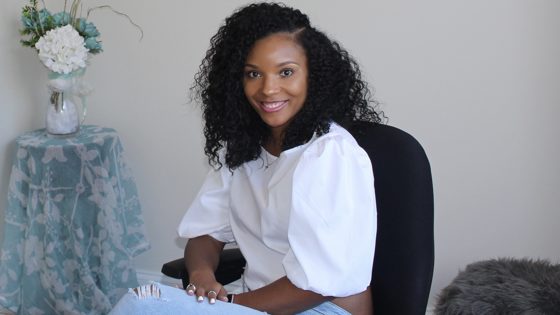I paid off $32,295.30 of debt in 12 months!! I began this journey in $118,069 of consumer debt. This debt included several credit cards, medical expenses, 2 auto loans, 2 cellphones, a 401k loan, and (the largest debt of them all), student loans. I’ve always assumed paying timely minimum payments on debts monthly meant you were financially healthy.
The Moment I Made The Decision To Get Out Of Debt
Let’s go back to 2016. In 2016, my credit card balances were fairly low and I made minimum payments on them. At that time, we were saving drastically for our wedding. Although I had a budget for the wedding, things started to add up quickly and I went over that budget. As a result, our credit card balances went from “fairly low” to “OMG!”. October of 2017, after the honeymoon phase was over, I looked at all of our debt (that now includes both mine and my husband’s). I quickly became overwhelmed with the fact that 85% of my monthly bills were debt payments. I started to think “what if I didn’t have a car payment? You know what I could do with that extra $450 a month?!”.
Imagine me, now in a frantic state, on my laptop, pulling up my auto loan statement just to see how long it would take me to pay off my car and how much progress I’d made at that time. I realized that my balance was almost the same that it was the month before, even though I made a payment of $450. Research mode immediately began. I pulled up all my debts and expenses and began to analyze them. My student loan was the debt that really got to me. I knew that at the rate I was paying, I would be in debt for the next 30 years.
The Light Bulb Goes Off
At that moment I made the decision to change my financial situation, but I didn’t know where to start. For the next week I listened to personal finance podcast from sun up to sun down. I would hear stories about how people were in hundreds of thousands of dollars in debt just a few years before and are now debt free. This motivated me! At that moment, I decided to get completely out of debt! How did I do it?
Changing My Mindset
First, I had to change my mindset. I had to make a commitment with myself to do whatever it took to get out of debt and remain disciplined. I had to change the way I thought about money and debt. Before, I thought debt was so normal, I was amazed to hear anyone say they did not have student loan debt, or that they paid off their car (earlier than expected). I had to realize that having student loans, car payments, credit card debt, etc. was not normal! That is not the way we should live. I didn’t go to school for 7 years (obtaining my undergraduate and masters degree) to live the next 30 years paying off student loans. That was not normal! Making the commitment to myselfand changing my mindset was the first step.
Next, I had to be clear about why I wanted to do this. What was the end goal and why? To avoid being restricted by money, to leave a legacy for my family, to travel and experience the world with my loved ones, and to have the ability to give abundantly, were my reasons why. Your reason why, is the thing that will guide, motivate, and push you toward your goal.
Analyzing My Financial Health
Next, I had to analyze my financial situation. I learned through this process that you cannot make “SMART” goals without assessing where you are. I wrote down all of my debts, my assets, and my income. At that point, I made pretty good money, but my net worth was negative. I couldn’t believe it!Although I was pretty disappointed with the snapshot I saw, it gave me a starting point. After assessing my personal situation, I was able to make “SMART” (specific, measurable, attainable, relevant, and time specific) goals. I had a clear vision of where I wanted to be and how I would get there.
Taking Action
Next, I started taking actionable steps to get to where I wanted to be. I reduced my expenses, increased my income, started to coupon, stopped all unnecessary expenses (eating out, memberships I didn’t use, etc.), and completely changed my lifestyle in order to reach my goal of debt freedom.
I then created a budget. My budget is so important because it’s how I measured my progress and I can visually see where my priorities lie. I track all of my spending and review my budget constantly. By reviewing my budget, I can see if I am doing things that will help me reach my ultimate goal or if I am chasing instant gratification, spending money on things that won’t matter in the future.
The next thing I did was created a plan to pay off debt more aggressively. There are several debt payoff strategies but you should do whatever works best for you. I did a combination of the debt snowball and debt avalanche method (I will talk more about these in detail in a later blog). Whatever strategy you use just make sure you have a plan that fits you. My plan has helped me pay off $32,000+ of debt in 12 months and I already have mapped out how I will continue to pay my debt for the next 2 years to ultimately pay off the entire $118,000+ right before I move on to increasing my savings and paying off my home.
12 Months Later
12 months ago, this all seemed unattainable. But I’ve made so much progress and I am so excited to tell my story, inspire others to pursue this life of debt freedom, and one day (soon) scream, “I’M DEBT FREE!!!”
The 30-Day Guide to Debt Freedom
During this process, I’ve documented every action that I took, noted what worked well, what didn’t work so well, and things I wish I would have done differently. I compiled all of this valuable information into a workbook. The workbook is a 30-day action plan that will take you step by step through the process of paying off debt and guide you through your debt free journey. Each day has a lesson and actionable steps for you to take that will be the foundation of your journey.









Leave a Reply